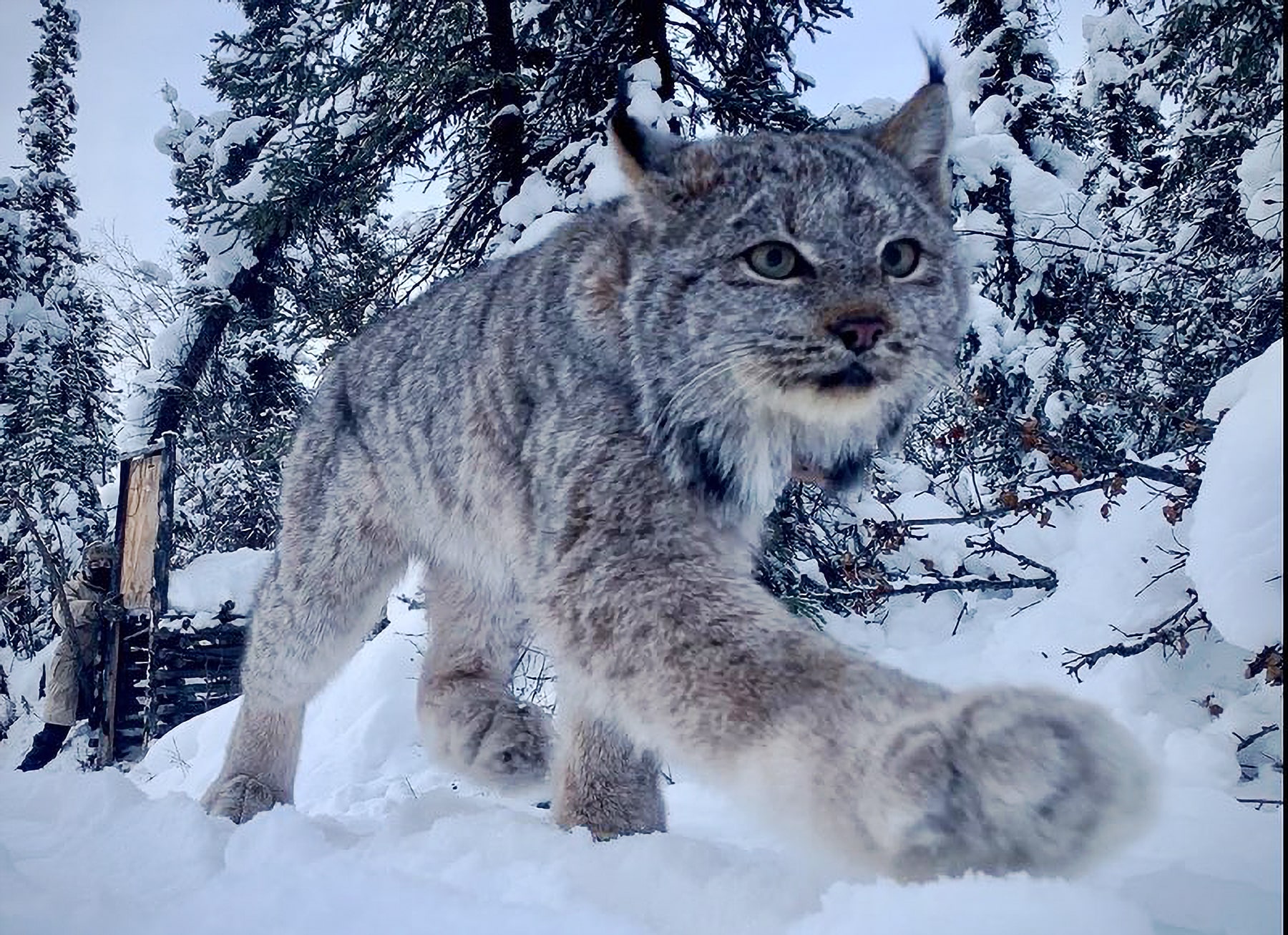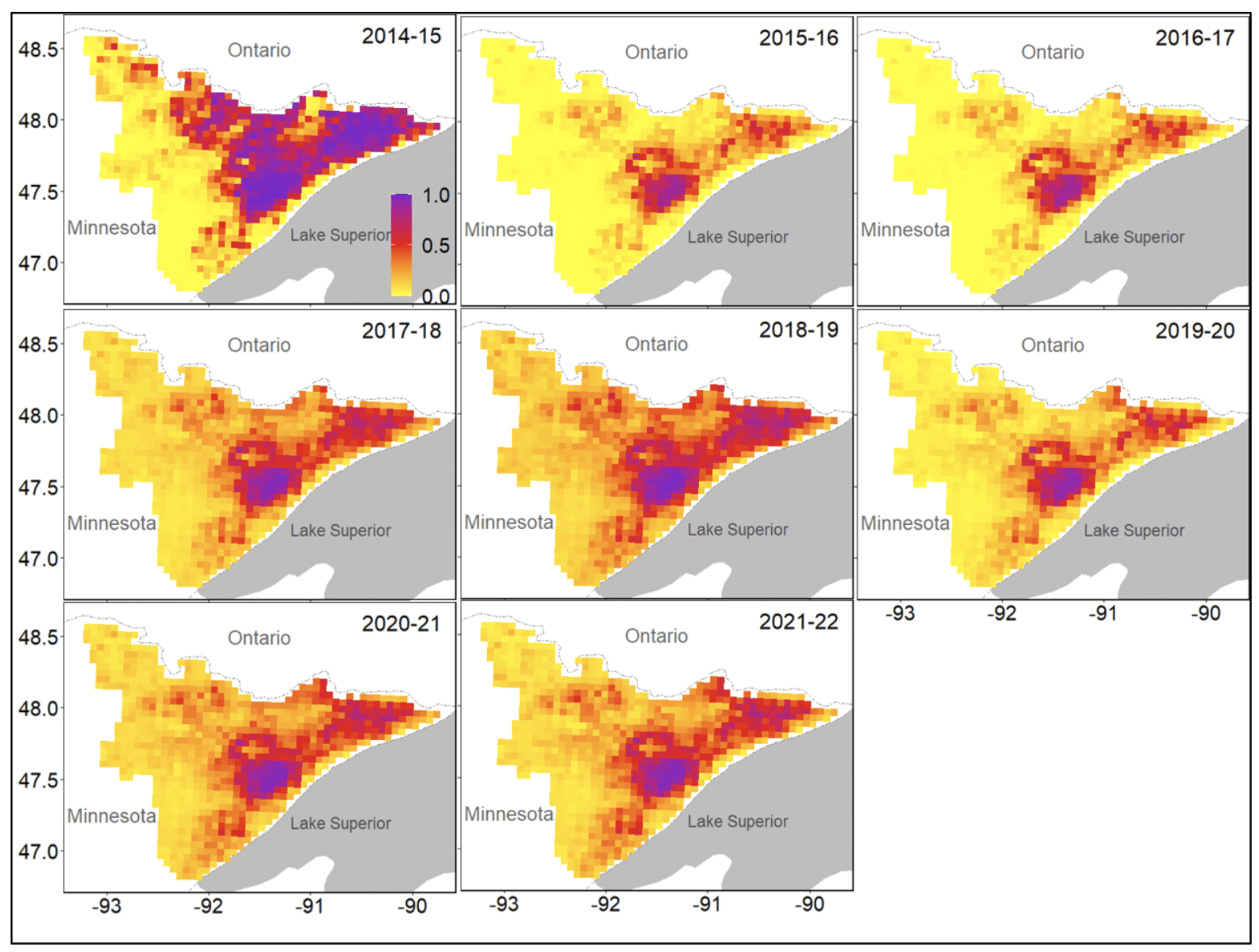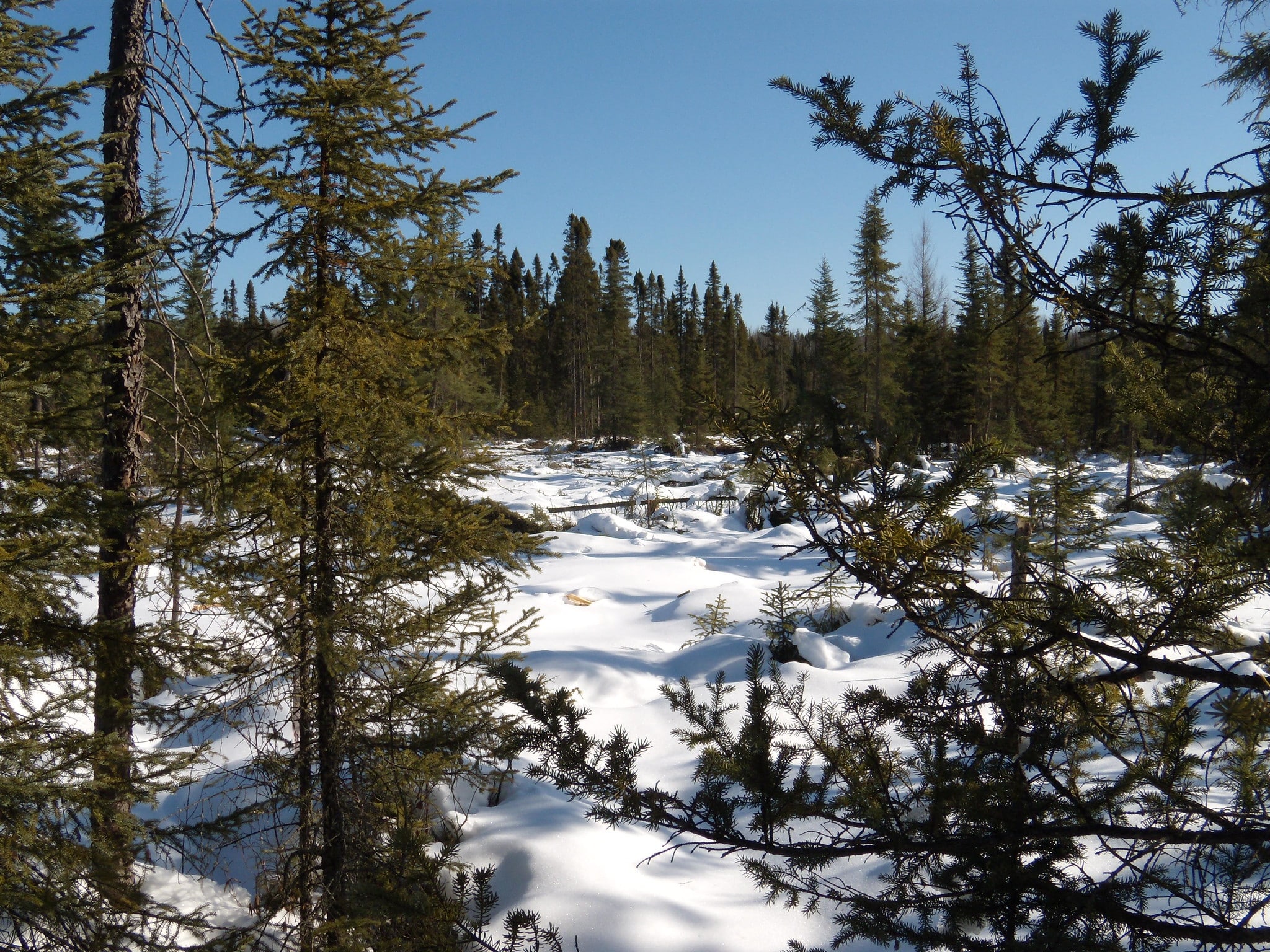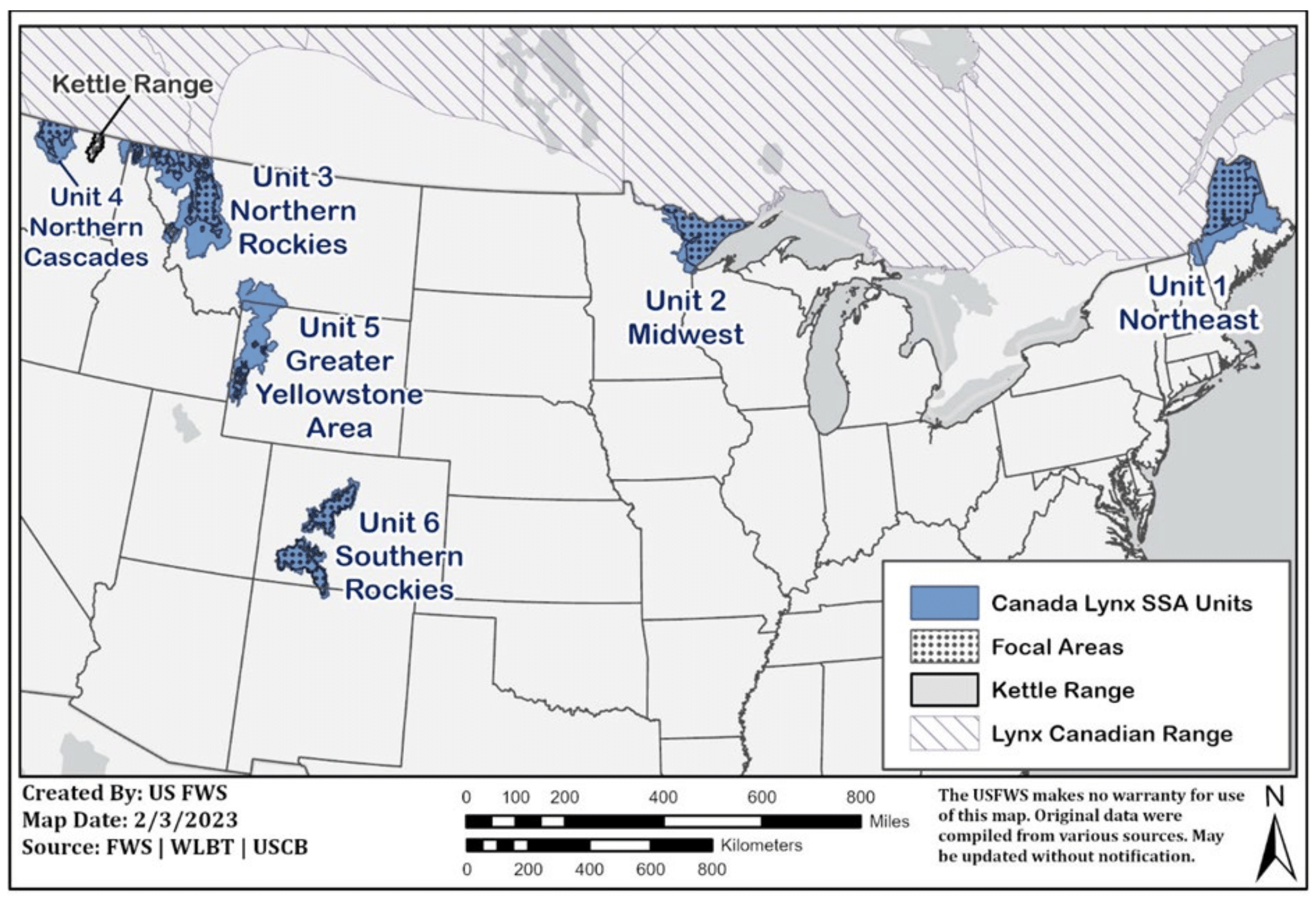
The U.S. Fish and Wildlife Service is now accepting public comments on a proposed plan to protect Canada lynx, the imperiled feline of the boreal forest. While the species is doing well across much of its range, it is listed as “Threatened” in the few places in the northern United States where its population dips south. The U.S. Fish and Wildlife Service says global climate change is currently the biggest threat to lynx’s survival in the United States.
The fate of lynx is closely connected to snowshoe hares, which it is highly specialized in hunting.
“The Canada lynx is a medium-sized cat with long legs and large, well-furred paws, which make it well-adapted for traversing and hunting in deep, powdery snow, where its low foot-loading (weight per surface area of foot) is thought to provide a competitive advantage … over other terrestrial predators of snowshoe hares, the lynx’s primary prey,” the USFWS says.
Lynx are found in disconnected pockets of suitable habitat scattered throughout the lower 48 states, including in Maine, New Hampshire, Montana, Idaho, Washington, and Colorado.

Minnesota stronghold
The population in northeastern Minnesota is actually considered one of the healthiest, with habitat for snowshoe hares increasing over the past two decades. The estimate does not include the Boundary Waters Canoe Area Wilderness, representing about a third of the National Forest, where such studies of habitat have not been performed.
The Superior National Forest, managing much of the land where lynx are currently found in Minnesota, has been working to improve habitat and conditions for lynx since the species was designated as “threatened.” A study of Minnesota’s lynx between 2015 and 2022 found the population has likely been increasing slightly, from about 60 in 2015 to approximately 90 last year.

Warming worries
The new federal recovery plan includes numerous recommended activities to help restore lynx in the lower 48 states. Minnesota’s population is hoped to remain stable at about its current size, while other areas have more room for improvement.
With global warming a key concern, the agency explains the factors that could make life harder for lynx. The Fish and Wildlife Service point out that, in the Midwest region, warming has sped up over recent decades, with warming happening fastest in winter, when it can most affect lynx and hare behavior. Rainfall in spring and early summer has also increased, and it has all combined to create significant changes across the landscape — with more to come.
“Projected warming is expected to reduce the extent and duration of snow conditions suitable for lynx in northeastern Minnesota significantly by the latter half of this century … and cause the northward contraction and possible loss of the boreal biome in the state with the northward expansion of deciduous forests into current lynx range,” the USFWS says. The agency also says large areas burned by recent wildfires, such as the 2011 Pagami Creek Fire, have recently transitioned to what is considered prime snowshoe hare habitat.
“The recent increase in wildfire in this area may benefit lynx by restoring some of the historical pattern of fire followed by beneficial forest succession,” the USFWS says.
Roads to recovery
The new recovery plan includes several national strategies to support lynx. The U.S. Fish and Wildlife Service works closely with land managers from local, state, and federal levels to consider lynx in their management work. The plans calls for continued and increased monitoring of lynx, to better understand the health of the populations, and how restoration activities can help. The agency will also prioritize connecting current lynx populations with other parts of their range, including into Canada. It will also try to identify possible refuges from climate change within the lower 48’s lynx range.

Earlier this year, the Minnesota Department of Natural Resources and environmental groups agreed on a plan to reduce accidental lynx deaths caused by trapping. While lynx can’t legally be trapped, they can be inadvertently caught in and killed by traps set for other animals. In the northeastern part of the state, where lynx are found, the DNR now prohibits strangulation snares unless they are set in water, or have several precautions in place to prevent accidentally catching and killing lynx. Leg-hold traps that are large enough to capture lynx were also banned in the Lynx Management Zone.
Native American tribes and agencies have been involved in lynx recovery efforts. In northern Minnesota, the Leech Lake Band of Ojibwe have begun monitoring snowshoe hare populations on the tribe’s reservation, and conducted a pilot study to improve hare habitat using forest management practices.
Key strategy
Another key strategy that could be important for lynx in Minnesota is the reduction of roads when possible. Abandoned roads used for logging or other activities can give snowshoe hares a better chance of escaping lynx, providing straightaways where the prey can hit higher speeds. Snowmobile trails and other hard surfaces also reduce the lynx’s advantage provided by its big, fluffy feet.
A public comment period on the plan is now open through January 30, 2024. Comments can be sent to CanadaLynxRPComments@fws.gov. The USFWS is “particularly interested in information about existing threats, ongoing management initiatives, and other factors related to implementing the proposed recovery actions outlined in the plan.”

